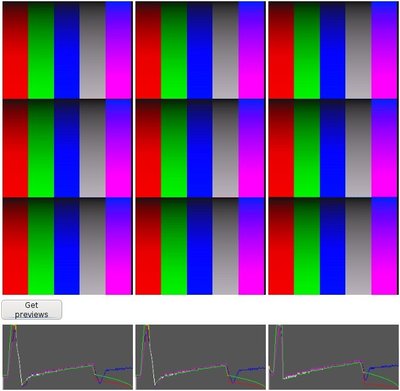Difference between revisions of "Eyesis gui"
From ElphelWiki
| Line 32: | Line 32: | ||
jquery-ui-1.8.4.custom.tar.gz | jquery-ui-1.8.4.custom.tar.gz | ||
* Unpack the archive (should get "jquery-ui-1.8.4.custom/") | * Unpack the archive (should get "jquery-ui-1.8.4.custom/") | ||
| + | |||
= User Guide = | = User Guide = | ||
Revision as of 15:08, 24 August 2010
Contents
[hide]About
Eyesis GUI allows to:
- change sensors' settings
- change compression quality
- start/stop recording
- check images and monitor sub-units status information
Download & Install
Ubuntu Linux
Package name: elphel-eyesis-gui
Dependencies: apache2, php5
There is a prebuilt package for Ubuntu users at elphel-eyesis-gui PPA.
To install it, use the following commands, see help for more information.
sudo add-apt-repository ppa:andersonnotgood/elphel sudo apt-get update sudo apt-get install elphel-eyesis-gui
Other platforms
- Get the sources from http://elphel.cvs.sourceforge.net/viewvc/elphel/eyesis353/elphel-eyesis-gui/
- Copy to you web server folder the following files:
eyesis.html, eyesis.js, camogmgui_multiple.php jquery-ui-1.8.4.custom.tar.gz
- Unpack the archive (should get "jquery-ui-1.8.4.custom/")
User Guide
1. GUI page
2. Quick Start
Note: There is a program called camogm for recording running on all 3 sub-cameras. Once the GUI page is accessed or refreshed a launch request is issued - it can take some time (~20-30sec).
- Set the IPs (correct ips are 192.168.0.xx1,192.168.0.xx2,192.168.0.xx3). Other parameters can be left default - access the GUI page. After camogms are started the "Camogm Status" will indicate that.
- Check the images
1. Go to the Other tab - switch on the Color bars pattern. 2. Press Get Previews button (it is ok if the images are cut from the bottom - it's the browser problem - just press the button again) 3. turn off the color pattern mode.
- Go to the Camera tab and press the Enable JP4 button.
- Make a test RECORD/STOP to check if all HDDs are present (the default RECORD delay is set to 5 seconds, so wait until camogm state becomes "running" then issue a STOP)
- RECORD
- Check camogm logs from time to time.
3. Tabs
Network
- Assign the correct IPs (currently works only in 192.168.0.x subnetwork + the correct IPs are 192.168.0.xx1,192.168.0.xx2, 192.168.0.xx3)
- Set refresh interval (status requests period) (can be left default)
Camogm
- HDDs are mounted with RECORD and unmounted with STOP.
- HDDs mount points are /var/0 - /var/7
- Prefix should be set to /var/0/ - /var/7/ (slash at the end is important). If the partition is less than 250GB an auto incrementing prefix change will be made.
- Split size, Split interval & Max frames - describe *.mov file split conditions. Whatever condition comes first it will result in a start of a new file.
Camera
- By default the autoexposure mode is ON with a 1ms maximum exposure. To turn it off go to "Other Parameters" link & AUTOEXP_ON=0
Quality
- Set Coring Index (the higher index the less the image size and so the quality is worse - default - 5, normal is 5-20).
- Control the compression quality.
Other
- "Manually" Mount/Unmount drives.
- ON/OFF color bars pattern.
4. Status & Errors
- Normally during the recording the buffers are not filled more than a half when the camogm state is "running". For "stopped" & "starting" the buffers can be filled arbitrarily.
- "Camogm last error code" = 5 - a frame wasn't written on the HDD in time. Although the recording will not be stopped - it is better to stop/start it.
- Check logs from time to time.
- If a HDD is not detected you'll get HDD low space error. Reattach the HDD and reboot the corresponding camera (see the Other paragraph of this page). After the reboot refresh the GUI page to launch the camogm program on the camera.
Other
- telnet 192.168.0.xx1
- telnet 192.168.0.xx2
- telnet 192.168.0.xx3
- root/pass
- Soft reboot can be done in telnet session with a command "reboof -f" OR go to http://192.168.0.xxx -> Terminal and type the same there (the page will freeze because the camera will be rebooting)
